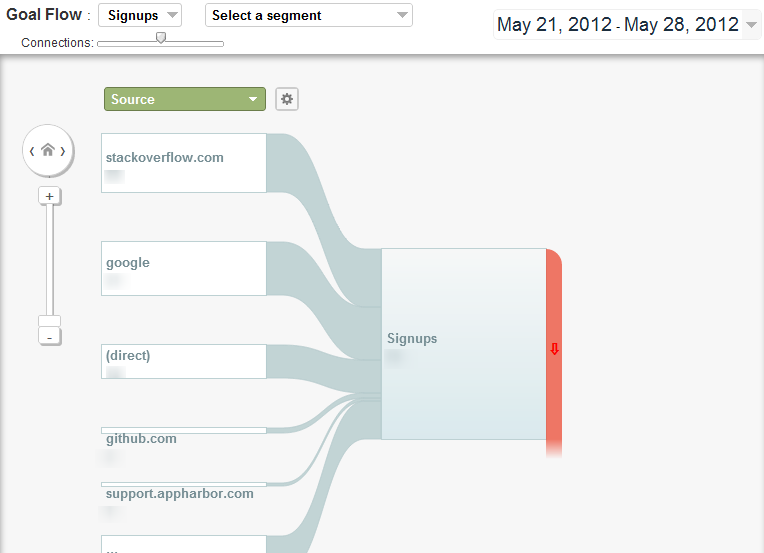The Google Analytics Event Tracking PDFs
Wiki Article
The 10-Second Trick For Google Analytics Event Tracking
Table of ContentsThe 9-Second Trick For Google Analytics Event TrackingUnknown Facts About Google Analytics Event TrackingThe Greatest Guide To Google Analytics Event Tracking3 Easy Facts About Google Analytics Event Tracking ExplainedSome Known Details About Google Analytics Event Tracking Examine This Report about Google Analytics Event Tracking

If you're going to establish event monitoring manually, after that you're going to have to include some added code to the aspects you want to accumulate data from. The code you're going to collaborate with will certainly look something such as this: There are four components within that code fragment that you're mosting likely to need to specify on your own: event, Classification, event, Activity, occasion, Label and event, Value.
As you can see, 2 of these are needed (classification and activity) while tag and worth are optional. Everything depends on the kind of details you want relayed back to Google Analytics when a customer clicks on the defined aspect (Google Analytics Event Tracking). It will certainly be a lot easier to define these components if you analyse your website and make a decision which elements/actions you want to track
The Google Analytics Event Tracking Diaries
Currently, you'll be asked to define the and and you'll want to select from the drop-down menu that shows up when you click. This will certainly bring up the same event monitoring components we looked at earlier, which you'll require to load out. As soon as you've specified these, you can relocate down to the second box and pick the trigger that will fire your tag.On the next screen, you'll likewise have an area for calling your trigger and, if you click package, you'll see a list of the various triggers you can select. In this instance, we want to choose and after that select the option listed below. You'll establish the trigger to only terminate when an aspect is clicked with a Link that includes the.
Every internet site talks. Prior to data analytics, we couldn't hear the voices of our websites. However just how do you know what your web site is saying? Easy - Event monitoring! Occasion monitoring provides you an image of how individuals engage with your website and service (Google Analytics Event Tracking). Do you wish to know more? Then, keep reading as we discover everything you need to recognize, including what it is, why you should track occasions, exactly how to manage occasions data, and various other appropriate Frequently asked questions you might have.
Rumored Buzz on Google Analytics Event Tracking
You can switch over in between your occasion groups, actions, and tags in the Leading Occasions report. This record is essential for digging additionally right into study on a details event classification. The Occasion Pages record shows the pages where events are triggered. In this section, we can analyze the top pages that drive events.Events in Google Analytics have four main aspects. Google Analytics utilizes these codes to track individual communications and team them right into occasion records (Google Analytics Event Tracking).
After that, pick "Variables" > "Configure". A listing of the specifications you can track on your web site is on the right. Under Clicks, Forms, and Videos, double-check each parameter. After inspecting all needed areas, you can click "X" to shut the window and return to the Summary menu on the left.
Google Analytics Event Tracking Things To Know Before You Get This

Choosing "False" will certainly stop that session from being a bounce. If you have not done so, you might require to set up a variable in the Google Analytics Setups box. Click "New Variable ..." if you can't find one to select. Hereafter, enter your GA monitoring ID in the Monitoring ID area.
To do this, comply with the following series of activities: After setting up the areas, select the "Triggering" section. When configuring your new trigger, click the "+" button, then the "pencil" button, after that choose your trigger kind.
How Google Analytics Event Tracking can Save You Time, Stress, and Money.
page
When it comes to recognizing which areas and elements are leading consumers via your conversion funnel, you still won't know. So, without event tracking, navigate to this site GA reports will just count visits as single-page sessions, also if users spend a great deal of time on one web page and engage with it considerably (and a bounce).
Just how does occasion tracking attain this?Single-web page sessions understood as bounces begin and wrap up on the same page. Without occasion monitoring, GA over here will certainly classify an individual's browse through as a bounce if they do not navigate to another web page, despite how they connect with it. For example, a video-rich page can have a greater bounce rate if occasions are not tracked.
The Best Strategy To Use For Google Analytics Event Tracking
For GA to take occasion hits into account when gauging bounce prices, you need to pick "Non-interaction event" as "False" during the GTM configuration. Establishing "event objectives" with occasion action is an outstanding means to keep an eye on user tasks you value very, such as new lead entries or clicks on a phone call to action.Report this wiki page